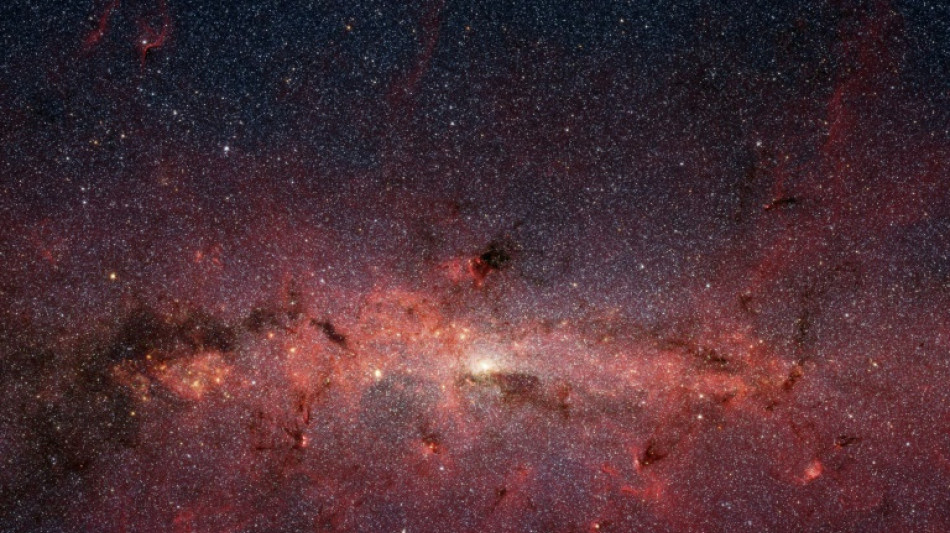
-
 Hong Kong, Shanghai lead losers on mixed day for Asian markets
Hong Kong, Shanghai lead losers on mixed day for Asian markets
-
China-US trade war heats up as Beijing's tariffs take effect

-
 7-Eleven to explore sell-offs with Couche-Tard ahead of potential merger
7-Eleven to explore sell-offs with Couche-Tard ahead of potential merger
-
'So important': Selma marks 60 years since US civil rights march

-
 Black comedy from award-winning 'Parasite' director tops N.America box office
Black comedy from award-winning 'Parasite' director tops N.America box office
-
EU chief sees US as 'allies' despite 'differences'

-
 French research groups urged to welcome scientists fleeing US
French research groups urged to welcome scientists fleeing US
-
Journalist quits broadcaster after comparing French actions in Algeria to Nazi massacre

-
 Highlights from Paris Women's Fashion Week
Highlights from Paris Women's Fashion Week
-
US ends waiver for Iraq to buy Iranian electricity

-
 China-US trade war heats up with Beijing's tariffs to take effect
China-US trade war heats up with Beijing's tariffs to take effect
-
Greenland's Inuits rediscover their national pride

-
 Floods, mass power cuts as wild weather bashes eastern Australia
Floods, mass power cuts as wild weather bashes eastern Australia
-
Wild weather leaves mass blackouts in Australia

-
 China consumption slump deepens as February prices drop
China consumption slump deepens as February prices drop
-
Phone bans sweep US schools despite skepticism

-
 Some 200 detained after Istanbul Women's Day march: organisers
Some 200 detained after Istanbul Women's Day march: organisers
-
'Grieving': US federal workers thrown into uncertain job market

-
 Remains of murdered Indigenous woman found at Canada landfill
Remains of murdered Indigenous woman found at Canada landfill
-
Women will overthrow Iran's Islamic republic: Nobel laureate

-
 Women step into the ring at west African wrestling tournament
Women step into the ring at west African wrestling tournament
-
Trump's tariff rollback brings limited respite as new levies loom

-
 Hackman died of natural causes, a week after wife: medical examiner
Hackman died of natural causes, a week after wife: medical examiner
-
Oops, we tipped it again: Mission over for sideways US lander

-
 Cyclone Alfred downgraded to tropical low as it nears Australia
Cyclone Alfred downgraded to tropical low as it nears Australia
-
Global stocks mixed as Trump shifts on tariffs weighs on sentiment

-
 Trump says dairy, lumber tariffs on Canada may come soon
Trump says dairy, lumber tariffs on Canada may come soon
-
Trump cuts $400 mn from Columbia University over anti-Semitism claims

-
 US Fed chair flags policy uncertainty but in no rush to adjust rates
US Fed chair flags policy uncertainty but in no rush to adjust rates
-
Adopted orphan brings couple 'paradise' in war-ravaged Gaza

-
 Oops, we tipped it again: Mission over for private US lander
Oops, we tipped it again: Mission over for private US lander
-
Greenland's mining bonanza still a distant promise

-
 Pope 'stable' as marks three weeks in hospital with breathless audio message
Pope 'stable' as marks three weeks in hospital with breathless audio message
-
Shares slump on Trump tariffs tinkering, jobs

-
 Mission over for private US lander after wonky landing
Mission over for private US lander after wonky landing
-
Thousands stranded as massive WWII bomb blocks Paris train station

-
 UK court cuts longest jail terms on activists, rejects 10 appeals
UK court cuts longest jail terms on activists, rejects 10 appeals
-
US hiring misses expectations in February as jobs market faces pressure

-
 S.Sudan heatwave 'more likely' due to climate change: study
S.Sudan heatwave 'more likely' due to climate change: study
-
US company says Moon mission over after landing sideways again

-
 Trump says farmers keen to quit 'terrible' S. Africa welcome in US
Trump says farmers keen to quit 'terrible' S. Africa welcome in US
-
US stock markets rise as investors track Trump tariffs, jobs

-
 US hiring misses expectations in February, jobs market sees pressure
US hiring misses expectations in February, jobs market sees pressure
-
Disco, reggae on King Charles's 'eclectic' Apple playlist

-
 Australian casino firm strikes deal to avoid liquidity crunch
Australian casino firm strikes deal to avoid liquidity crunch
-
Deposed king's grandson makes low-key return to Egypt

-
 Stock markets, bitcoin down as Trump policies roil markets
Stock markets, bitcoin down as Trump policies roil markets
-
Bangladesh student leader aims to finish what uprising began

-
 Japan, Britain stress free trade in Tokyo talks
Japan, Britain stress free trade in Tokyo talks
-
Spain targets men's 'deafening silence' in gender violence battle


Object found in the Milky Way 'unlike anything astronomers have seen'
Australian researchers have discovered a strange spinning object in the Milky Way they say is unlike anything astronomers have ever seen.
The object, first spotted by a university student working on his undergraduate thesis, releases a huge burst of radio energy three times every hour.
The pulse comes "every 18.18 minutes, like clockwork," said astrophysicist Natasha Hurley-Walker, who led the investigation after the student's discovery, using a telescope in the Western Australian outback known as the Murchison Widefield Array.
While there are other objects in the universe that switch on and off -- such as pulsars -- Hurley-Walker said 18.18 minutes is a frequency that has never been observed before.
Finding this object was "kind of spooky for an astronomer," she said, "because there's nothing known in the sky that does that."
The research team is now working to understand what they have found.
Trawling back through years of data, they have been able to establish a few facts: the object is about 4,000 light-years from Earth, is incredibly bright and has an extremely strong magnetic field.
But there are still many mysteries to untangle.
"If you do all of the mathematics, you find that they shouldn't have enough power to produce these kind of radio waves every 20 minutes," Hurley-Walker said.
"It just shouldn't be possible."
The object may be something researchers have theorised could exist but have never seen called an "ultra-long period magnetar".
It could also be a white dwarf, a remnant of a collapsed star.
"But that's quite unusual as well. We only know of one white dwarf pulsar, and nothing as great as this," Hurley-Walker said.
"Of course, it could be something that we've never even thought of -- it could be some entirely new type of object."
On the question of whether the powerful, consistent radio signal from space could have been sent by some other life form, Hurley-Walker conceded: "I was concerned that it was aliens."
But the research team was able to observe the signal across a wide range of frequencies.
"That means it must be a natural process, this is not an artificial signal," Hurley-Walker said.
The next step for the researchers is to look for more of these strange objects across the universe.
"More detections will tell astronomers whether this was a rare one-off event or a vast new population we'd never noticed before," Hurley-Walker said.
The team's paper on the object has been published in the latest edition of the journal Nature.
P.Petrenko--CPN
